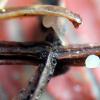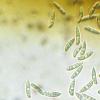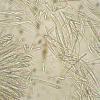
15-12-2025 15:48
 Danny Newman
Danny Newman
Melanospora cf. lagenaria on old, rotting, fallen

15-12-2025 15:54
 Johan Boonefaes
Johan Boonefaes
Unknown anamorph found on the ground in coastal sa

15-12-2025 21:11
 Hardware Tony
Hardware Tony
Small clavate hairs, negative croziers and IKI bb

15-12-2025 07:09
 Danny Newman
Danny Newman
indet. Rutstroemiaceae sp. on unk. fallen leavesMc

15-12-2025 07:05
 Danny Newman
Danny Newman
Pseudosclerococcum golindoi (det: Zotto)near Cosb

15-12-2025 11:49
 Danny Newman
Danny Newman
ITS sequences from the following two collections B

15-12-2025 12:34
 Danny Newman
Danny Newman
indet. Rhytismataceae on oak leafnear Purchase Roa

09-12-2025 12:06
 Andgelo Mombert
Andgelo Mombert
Bonjour,Je recherche l'article concernant Hypobryo
Hymenoscyphus on Juniperus
Marja Pennanen,
30-08-2010 09:14
as I mentioned I found something on the needles and twigs of Juniperus, which I naturally couldn't determine.
These are about 0.3-0,7 mm wide and 1-2 mm high.
The base of the stipe may be darker.
Marja Pennanen,
30-08-2010 09:16
Marja Pennanen,
30-08-2010 09:22
Hans-Otto Baral,
30-08-2010 12:41

Re:Hymenoscyphus on Juniperus
Hymenoscyphus is one of the most difficult genera. especially those with scutuloid spores are a hard nut. I do not see clear in such species like H. caudatus and even H. scutula.
Yours has quite narrow spores, and at the moment I have no suggestion, sorry. Important would be to know the croziers, actually. The ascus base is quite well seen on your photo, but should be viewed with oil immersion. I am sure you can learn that, I also must often search some time to see the feature clearly. It depends on the orientation, on the living state, on maturity etc., all this can obscure the feature. Best is to make a section and look at living cells.
Zotto
Yours has quite narrow spores, and at the moment I have no suggestion, sorry. Important would be to know the croziers, actually. The ascus base is quite well seen on your photo, but should be viewed with oil immersion. I am sure you can learn that, I also must often search some time to see the feature clearly. It depends on the orientation, on the living state, on maturity etc., all this can obscure the feature. Best is to make a section and look at living cells.
Zotto
Marja Pennanen,
30-08-2010 13:43
Re:Hymenoscyphus on Juniperus
Hello Zotto,
my problem is that I've got almoust no practical education to mycology or nothing else, too.
I've just learned myself on the way.
Just dived (fast and deep?) into it and hoped to survive ;).
Now I'm waiting in despair, when the local university needs my loaned microscope for educational purposes.
Marja
my problem is that I've got almoust no practical education to mycology or nothing else, too.
I've just learned myself on the way.
Just dived (fast and deep?) into it and hoped to survive ;).
Now I'm waiting in despair, when the local university needs my loaned microscope for educational purposes.
Marja


